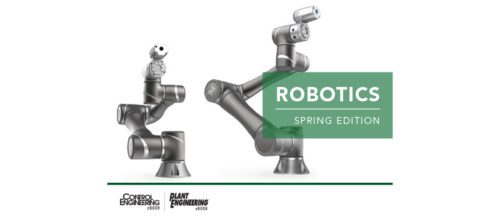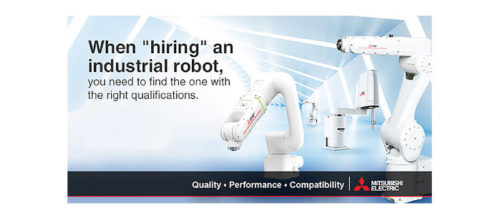3-D vision driving innovation for robots
Pick-and-place used to be an extremely difficult task for robots, but thanks to 3-D vision innovations, it is now a commonplace operation.
3-D vision capabilities are driving rapid innovation in industrial robotics, broadening their potential applications. New vision technology provides flexibility for robotic systems, allowing them to perform functions they never could before.
Industrial robots themselves are an incredible innovation in manufacturing, but "blind" versions of robots have had their limitations. So how are 3-D vision guided robots different than traditional robots?
Why 3-D vision is important
First, there were "blind" robots. These provided great benefits over manual labor for boring, repetitive tasks, but their lack of vision limited them to these tasks. "Blind" robots had to be programmed to complete a single task at a time, and there is no way to account for variations in this task without reprogramming.
Flexibility is a key driver of ROI in robotics. 3D vision capabilities have allowed robots to complete more than one task without reprogramming, as well as the ability to account for unforeseen variables in work environments. Further, 3D vision allows a robot to recognize what’s in front of it, to a certain extent, and react accordingly. All of this drives robotic flexibility, and thus quicker and better ROI.
How industrial robots with 3-D vision change automation processes
There are a number of ways that 3-D vision is currently being used for industrial robotics. One of the most prominent ways is in pick and place applications, which have traditionally been extremely hard for robots. "Blind" robots could only pick objects from a predetermined position and 2-D camera systems could not pick out a part from its background.
3-D vision achieved with laser triangulation is one of the most common methods of robotic vision in pick and place applications. Essentially, a computer-aided design (CAD) model is ‘taught’ to a robot so that it can recognize a part and its orientation in space. A laser is used for the robot to determine its own orientation in space in the x, y and z axes. Once the robot knows where itself and the part are at, it can pick up the part and place it.
While this may seem like a simple task, it is a revolution in the industrial sector. It saves time and money for the end user. With the simple introduction of CAD models, a robot can perform a variety of tasks.
3-D vision, whether it’s from laser triangulation or a different method, is a driving force of innovation. Pick and place used to be extremely difficult for robots, but now it is a commonplace operation.
This article originally appeared on Robotics Online Blog. Robotic Industries Association (RIA) is a part of the Association for Advancing Automation (A3). A3 is a CFE Media content partner. Edited by Carly Marchal, content specialist, CFE Media, cmarchal@cfemedia.com.
Original content can be found at www.robotics.org.
Do you have experience and expertise with the topics mentioned in this content? You should consider contributing to our CFE Media editorial team and getting the recognition you and your company deserve. Click here to start this process.



